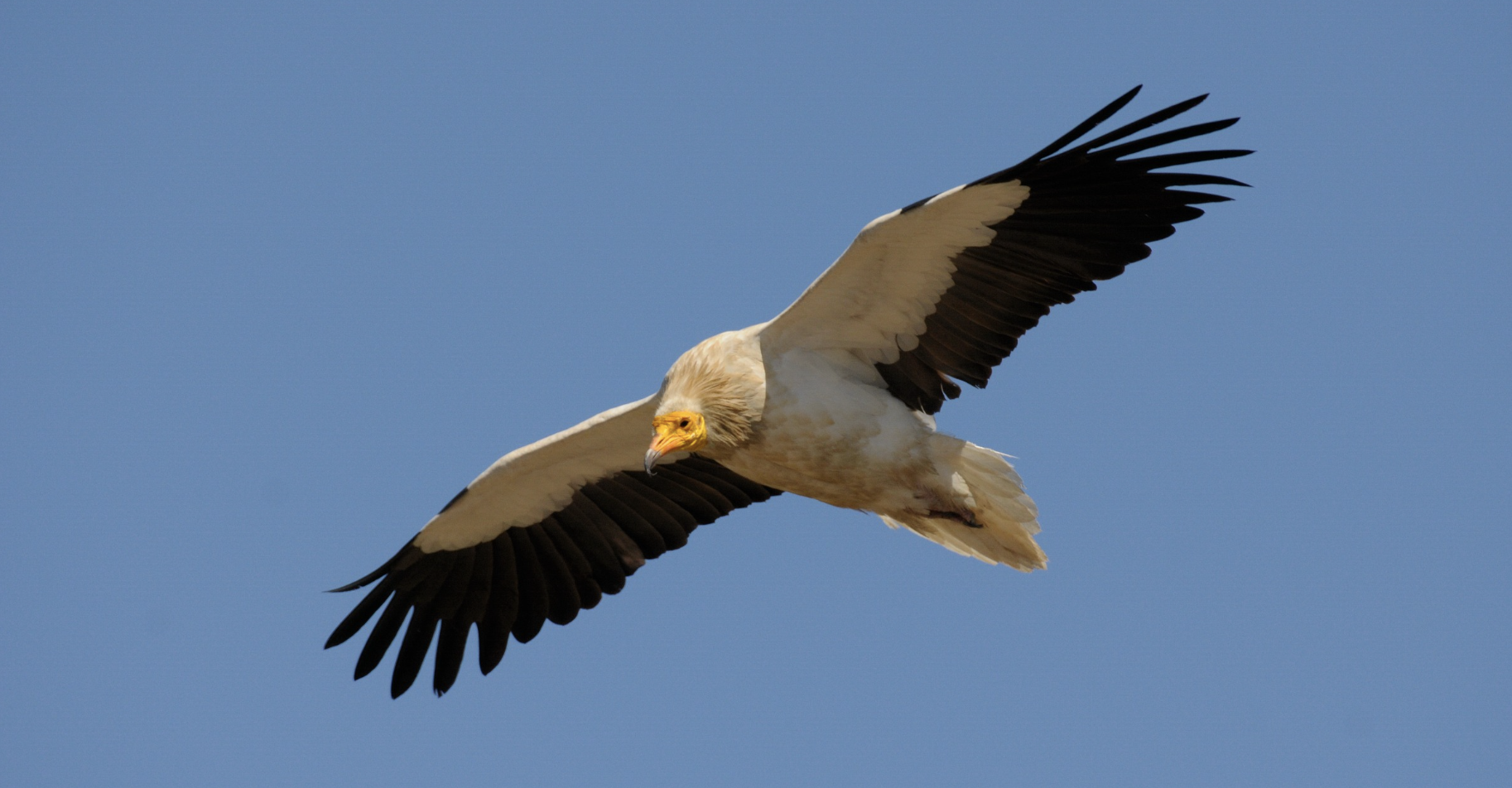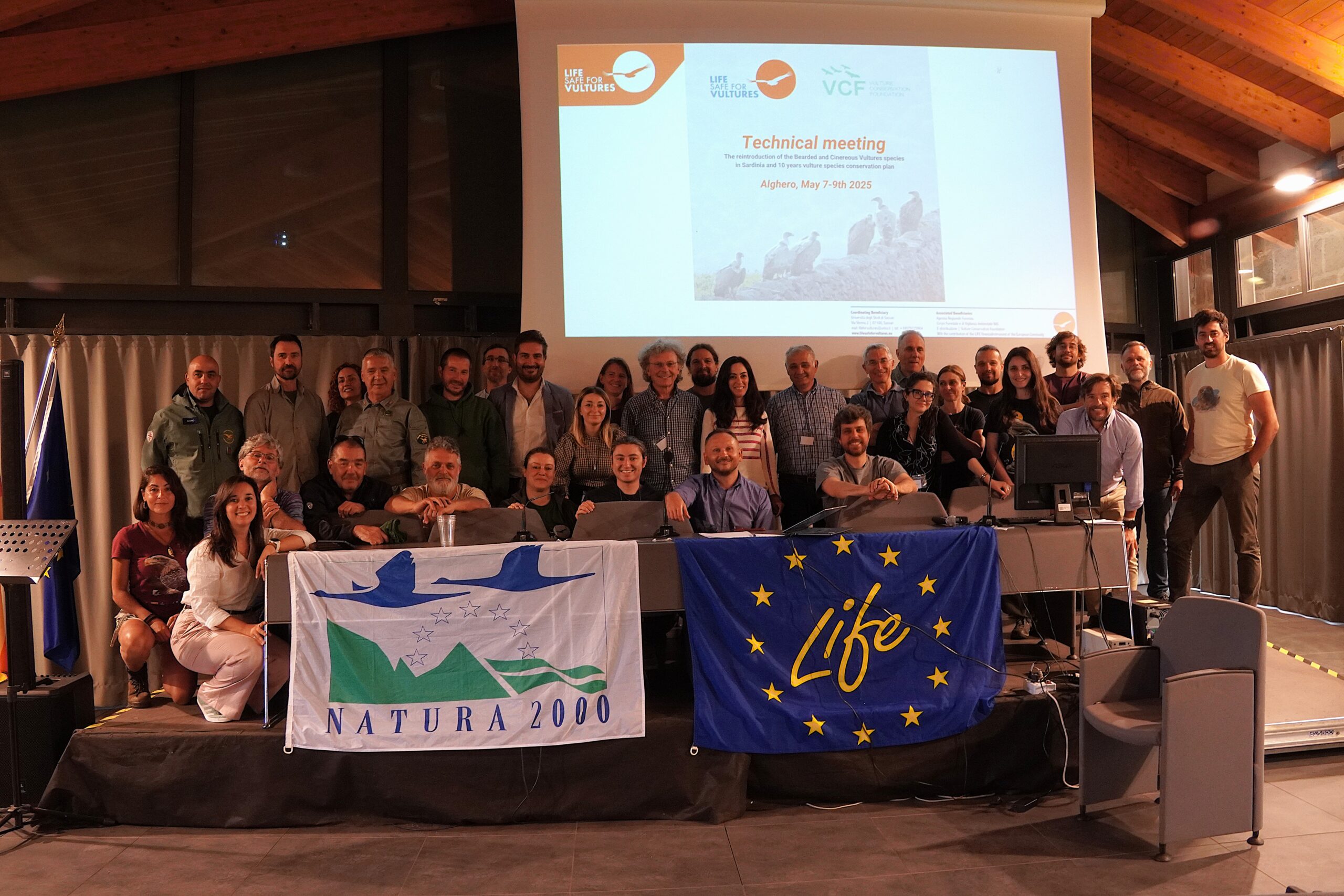
Weak, malnourished and with problematic feathers— that’s how the life of young Egyptian Vulture Fangueiro begun. Thankfully, he was rescued and rehabilitated in time. Through dozens of operations and treatments, he grew new feathers but also got new ones through imping, gained strength and was ready to return to nature after almost a year in rehabilitation. As his time in recovery coincided with the start of migration of the species to Africa by the end of summer, and he spent his first months of life in captivity, the team was anxious to see if he will attempt and manage to cross the Strait of Gibraltar to reach Africa. As it turns out, the bird not only managed to reach Morocco safely but already made good progress heading south towards his wintering grounds!
Rescue, rehabilitation and release
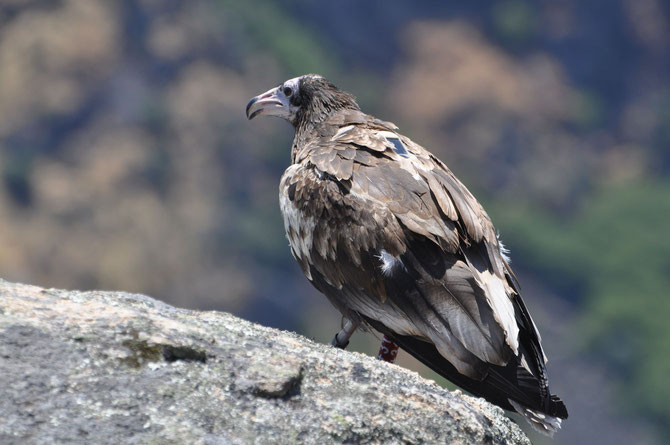
Found weak at Fão and with problematic feathers after experiencing severe hunger in the nest, Fangueiro was rescued in autumn of 2019 and spent almost a year in a rehabilitation centre. There, he underwent several operations and treatments to grow healthy feathers while also getting new ones through imping (implementation of features from another bird). Thanks to the efforts of the Instituto da Conservação da Natureza e das Florestas,Universidade de Trás-os-Montes e Alto Douro (UTAD), CIARA rehabilitation centre, Sociedade Portuguesa para o Estudo das Aves (SPEA) and the Vulture Conservation Foundation (VCF), Fangueiro made a full recovery, was tagged with a GPS-tag and was released on 13 July 2020 at the Douro within the LIFE Rupis project. The project team has been closely following the movements of this young Egyptian Vulture who had a troublesome beginning, to see how he is adapting to the wild and intervene if he needs help again.
Fangueiro’s movements after release
Following his release to the wild, Fangueiro has been exploring the surrounding areas in the summer months, adapting very well to the natural environment and effectively developing his food exploration capabilities. Flying mainly around the PN Douro and on the Spanish side to it. He then started heading south on 7th October. By that time, other Egyptian Vultures we monitor have already reached their wintering grounds. Fangueiro flew south to Sevilla, but instead of keep flying south turned west and ended up in Sagres, the most South-Western tip of Portugal. This is not unusual for birds migrating for their first time. After that he flew again past the strait of Gibraltar, heading for Malage and flying along the coast and back to the hilly area behind the coast.
Reaching Africa
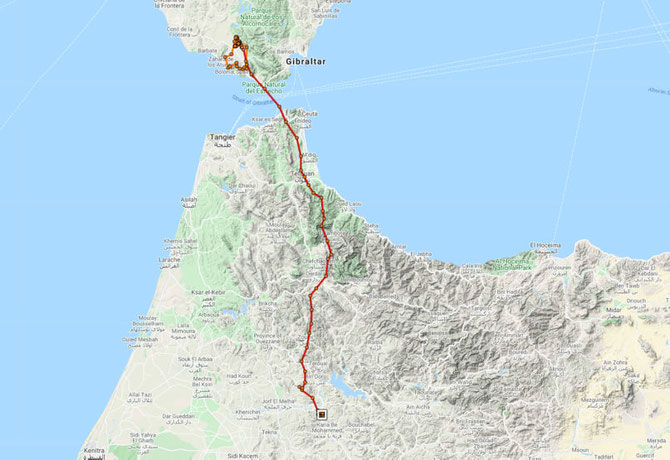
Then, on Monday, 26 October, Fangueiro visited Tarifa again, the place where a lot of migrating birds from West Europe congregate before crossing the sea to reach Africa. Then, he finally found the good spot and then actually crossed the strait in a mere 20 minutes.
Young Egyptian Vultures usually stay in Africa for at least 18 months (sometimes longer) before returning to their natal origins in Europe in the spring, and starting their annual cycle of migration to Africa in the autumn and back to Europe in the spring. After five or six years they reach sexual maturity and try to establish their own territory and form a breeding pair, often not far from where they hatched themselves.
The story of Fangueiro is truly inspiring and shows the resilience of these birds! We hope Fangueiro will successfully return to Iberia one day to breed — until then, we will keep a close eye on him through his GPS data.
You can stay tuned with Fangueiro by following us on Facebook and Twitter.
LIFE Rupis
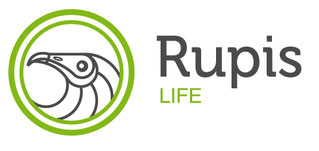
The LIFE Rupis conservation project, led by Portuguese wildlife organisation Sociedade Portuguesa para o Estudo das Aves (SPEA), and funded by the European Union’s LIFE Fund and the MAVA Foundation, is working in the cross-border Douro region of Spain and Portugal to protect and strengthen the populations of Egyptian vultures and Bonelli´s eagle. With around 135 breeding pairs, the region has one of the largest population of Egyptian vultures in Europe. Creating a network of feeding stations, improving habitat and nesting sites as well as tackling the major threats of electrocution from electricity pylons and illegal wildlife poisoning, the LIFE Rupis project will strengthen the population and improve breeding rates.



